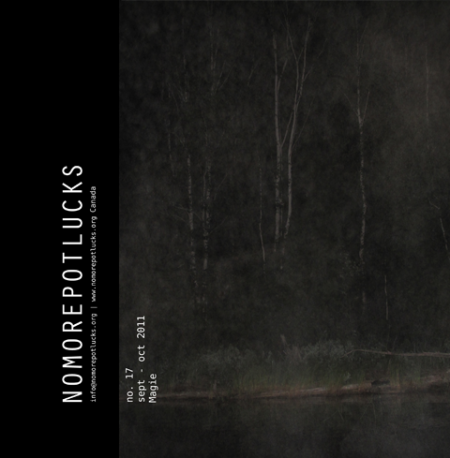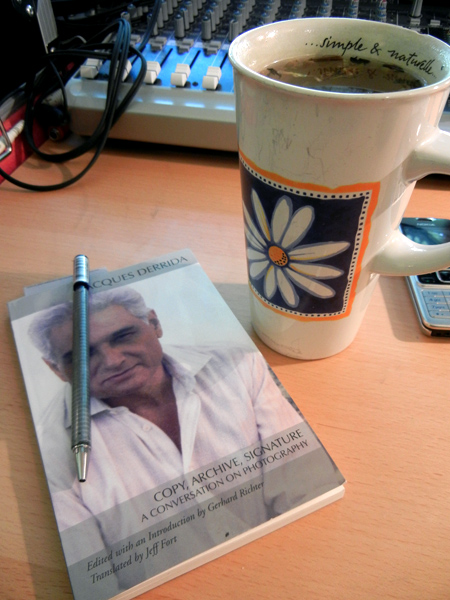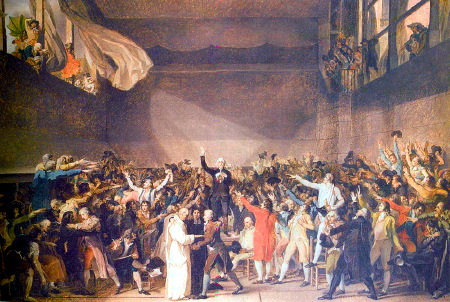The seventeeth issue of the illustrious No More Potlucks, edited by Sophie Le Phat Ho, is dedicated to inducting its readers into magic — magie no. 17 | no more potlucks.
The choice of ‘magic’ as a topic came out of a concern – une préoccupation qui semble être partagée, vu la richesse des contributions présentées dans ce numéro – for what we are up against… En effet, la magie relève de la technique, de la pratique, du procédé, de l’art, de l’action. Elle est donc intimement liée à une analyse de la réalité, de l’environnement, et ne serait être de l’ordre du divertissement, de la fantasmagorie… Bref, this is serious. [Sophie Le Phat Ho, editor]
This issue features a brief piece I writ entitled Blind Signifiers in the New Age, introduced by a recent communication sent to Hakim Bey.
Blind Signifers is a condensed text on magick as the art of the slippage between signifers, the minimum distance of which constitutes consensual reality. Magick in this respect is a force in the sense that it generates effects wrought from symbolic subterfuge. Magick traverses the realms of the illusionary and the imaginary; it is precisely that viscosity that allows us to conceive of that which would puncture reality with its surreality or irreality. In this sense, magick (a) is generative through effects of signifying systems and (b) is not to be trifled with. Its underlying principle is that CHAOS NEVER DIED.
The principle point is that magick is very much in use all around us: it connects the surface of things; it is especially engaged to ensure consistency of action/reaction in systems of capitalist desire, notably consumerism. It is not magic at work here, not the mere trickery of an illusion, but magick, the technics of signifier slippage, the art of symbolic subterfuge. These be the darker arts when used to deceive.
Any such concept of magick as a praxis of symbols follows from the work of Hakim Bey, whose creative work with chaos theory (and the Mandelbrot Set), connecting anarcho-politics to the folds of physics and geography as well as the deconstruction of semiotics and philosophy some 25 odd years ago is, I would argue, indispensible to grasping semiocapitalism. Yet like all texts, including this one, it is writ with a cleaved-edge. Beware the folds.
There are many good essays in this collection (do read them) but relevant to my own work is Magic, Strategy and Capitalism: An interview with aladin by Anja Kanngieser and Leila, who pose the question “what happens to magic once it is embedded in the languages of business and industry?”. Indeed; this is the fundamental question that founds the dark art of advertising and second order cybernetics. However this question ought to be reinscribed: how is it that magick is the basis of capital? How is it that magick constitutes the language of capital itself?
To this end, I would suggest a deeper reading into the “tradition” of magick, as well as that of Marx. Perhaps magic has always been about entertainment and tricks, but magick operates at ways far more embedded into the technics of perception, which is to say, the way in which value is inscribed and perceived.
In this sense—which needs qualifying—the language of magic has been, as the article suggests, “put into use for capital,” but only as a secondary effect or diversion from the magick of capital itself. Reading Marx, magick is that operation which derives exchange value from use value. Capital operates by way of magick. It is that which makes the “commodity stand on its head” in Das Kapital. Marx often discusses capital as “phenomena” and “illusion,” as a “phantom,” but none of these are terms meant in the tradition of cheap tricks: a social relation is masked behind the relations of capital. Violent, dark magick, in other words, the magick of turning quality into quantity, humanity into slavery, world into resource, is at the heart of capital. Capital is no cheap trick; its cost is Faustian.
As Marx writes, capital’s effects are phantomic; it is precisely this haunting effect, this “specter” of capital which, according to Marx, needs to be exorcised. Over a century later, in 1994, Derrida argued in Specters of Marx that the phantom in general—hauntology—cannot be exorcised. In short, the revolutionary magick proposed by Marx (which was famously unthought) against the magick of capital cannot eradicate the fundamental principles (of magick) upon which capital is based. Why? For the principles of capital—magick—are also those of its antithesis. Any possible antithesis. One cannot eradicate the simulacra; for at base, there is only a doubling of simulacra. Or to put it another way: to attempt to exorcize capital would obliterate the very principle of revolutionary communism, the imaginative magick of a collective ideal. To attempt to practice absolute exorcisim only unleashes the violence at the core of all magicks claiming to unveil or obliterate the true origin or the true illusion (the two being equivalent in force). One cannot exorcise ghosts nor dark magick in toto or ex nihilio. The principle of magick is always thus always doubled: (1) magick never comes from nothing; it always draws from another power and (2) thus it always produces unintended effects and consequences that remain in excess to its intentions. As Derrida thoughtfully explored—in a way few have—one has to learn to live with ghosts. To speak with them. Speak to it, Horatio. Learn to speak the language of magick. One does not exorcise magick; one seeks to practice it as the art of samizdat and containment. Infiltration. And other creative arts that destabilize the easy yet dangerous magick of commodification.
Likewise, when Marx wrote that “All that is solid melts into air” as effect of capitalism, he had in mind the magick of substantial transmutation, not as trick or hoax but as the slippage of signs in which an object of use value (the table) is stood on its head, begins to walk, and becomes the commodity of exchange value—out of which evolves further signs:
But, so soon as it [the wooden table] steps forth as a commodity, it is changed into something transcendent. It not only stands with its feet on the ground, but, in relation to all other commodities, it stands on its head, and evolves out of its wooden brain grotesque ideas, far more wonderful than ‘table-turning’ ever was. (Marx, “The Fetishism of Commodities” in Capital Vol 1)
Magick breeds magick; we are deep now in the realm of these wooden, grotesque ideas of semiocapitalism. In the 21st century, magick has revealed itself as operative mechanism of capital in-itself; this is the meaning of the 2008 financial crisis. This is a crisis of the system of signifiers which determines valuation, a crisis of completely speculative levels of capital which are completely estranged from what Marx called “use value.” It is the beautifully complex world where negative effects (debt) are valued as positive on a completely speculative basis of future returns—returns which, as the various complex operations of debt transfer and futures demonstrate, are expended infinitely until “all that is solid melts into air,” completely suspended, and crashes. And the effects of this crash are disastrous.
Herein lies the “trickle down” effect of capitalism: all the debt culled from below and profited from above returns with a vengeance, as it does not trickle but torrents down and pools in the trenches. At the bottom, those impoverished drown in debt. This is what smiling Reagan meant when he sold trickle-down capitalism to the masses. Shit runs downhill. While all shall inherit the debts of the financial crash, those at the bottom, unable to dodge the wreckage, will reap its total effects, as all of semiocapitalism, as all that dark magick and uncollected emptiness, trickles down into a whirlpool of poverty. This is the lesson of trickle down capitalism: those above, unless clinging to the burning hulk as it splits apart, never even have to open an umbrella. The metaphors are pushed here, but you get the point.
A keyword missing from this discussion with aladin would be afrofuturism, where the dark arts of magick take on another dimension, that of the transmutation of concepts such as race. Perhaps more on this soon.
I would also highly recommend the evocative Sex Magic in One Act: Exploring the Properties of Extensional Sex by Lolix. The reversal of inside to outside using sex magick’s gendered body from female to male is here rendered explicit in creative sex work. Pan/drogyne, in short. Lolix explores a shift that takes us beyond -x to +x, presence of the phallus/absence of the vaginal interiority, and into the z/y axes to a third-eye dimensional sense of the chiasmus. This text and its images work on many layers. It brings to mind the latest incarnation of Genesis Breyer P-Orridge, as s/he becomes neither male nor female, yet both, as the physical incarnation of Genesis’ now deceased partner. The signifying magick be: S/HE IS (STILL) HER/E, the permutations of which continue to unfold in the flesh.












 RT
RT 